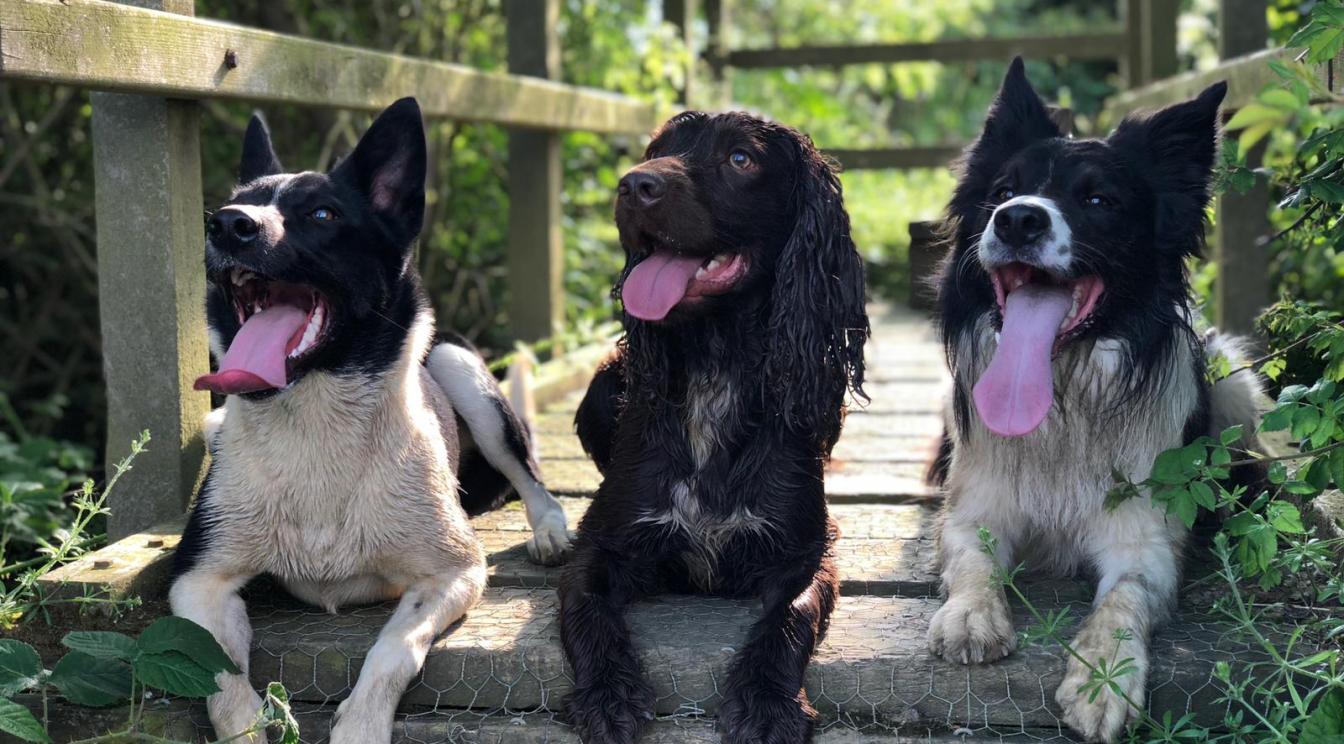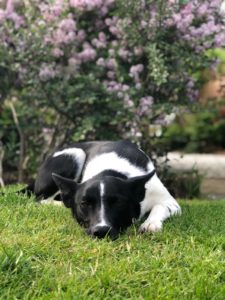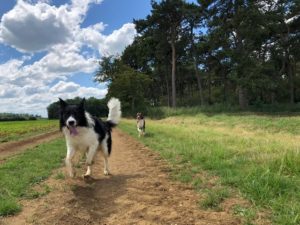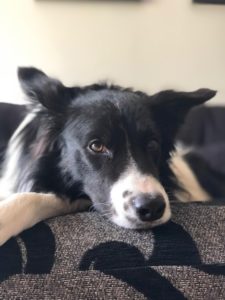
Can you teach a dog to be calm?
Calmness is a concept in dogs that some find easier to master than others. When your puppy or dog is overtired, excitable, and won’t relax, we can often think that the only way to tire them out and get them to sleep is by taking them for longer walks, or playing for longer.
Does it work though?

In theory it sounds like a good idea.
But if that that were true, then people just wouldn’t have this very common struggle.
So, what’s the science behind this?
When a dog is excited or aroused, and that can be through playing, walking, or even training, their cortisol level increases. It also increases when something scary happens, like barking at noises they don’t like, barking at the dog over the road or the postman knocking on the door.
As these levels increase, the body start to down-regulate some of the other systems in the body to account for a ‘fight or flight’ mode that starts kicking in. One of the systems that is down regulated, is the sleep system.

So, by walking more, and playing more, all you are doing is further increasing those stress hormones quite possibly making it more difficult for your dog to relax.
So, there are three KEY things we can do to help our dogs to become calmer, as well as some excellent training tips to help you along the way!
- Monitor what fills their ‘bucket’
Some dogs have considerably larger buckets than others to hold that stress hormone. Start to be more mindful of what goes in it. Spread play and training sessions through the day rather than having one hour long play fest to help your dog bring those levels back down in between.
2. Empty the bucket regularly
There are things we can do, that are PROVEN to bring that cortisol level down:
- Sniffing (scatter feeding)
- Chewing (bones, chews etc)
- Licking (filled hooves, lickimats and kongs)
- Resting (limit choices – so they could be in a quiet room, crate or pen or just hanging with you on a bed watching TV)
These are all things we call ‘passive rest’ which is when a dog is resting, but not necessarily sleeping. Just hanging out!

3. Sleep
Sleep is important to your dog to reset and process all that great stuff they have been learning and to reduce that cortisol. You can help by making sure they have a quiet place to go, a bed, crate or pen, when they need to truly switch off and sleep. This is what we call ‘active rest’.

Studies show that dogs do best with 18-20 hours of both passive and active rest combined. Maybe make a note of what your dog does all day. If they aren’t very close to this, then try and change a few things so that you can encourage some more rest time.
You can check out some more calm training tips here.
Calmness is one of the top things that people struggle with, but hopefully this has given you some insight and something to start working with.
If you are struggling and want more help with calmness for your dog, around the house, or even when out on a walk, then send me a message and lets chat. I can offer one to ones, residential training as well as training classes to get you back on track!
